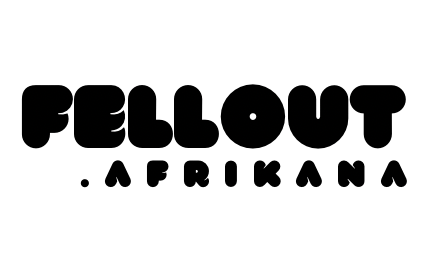The last four months have been unsettling to say the least. The pandemic rages on, causing unprecedented upheaval in our social, political, and economic structures, not to mention the personal pain and suffering experienced by millions. During the lockdown, you may have felt stressed, frustrated, and trapped, but now that we have started to reopen our economies, are you feeling any different? Are you surprised that you’re still feeling unsettled and frustrated, possibly suffering from “COVID fatigue”?
we’re getting mixed messages about the pandemic. On the one hand, it’s clear we are living through one of the greatest health threats in a generation. In many regions, COVID-19 infection rates are on the rise, people are continuing to die from the virus, and many hospitals are filling to maximum capacity. From this perspective, the situation looks ominous. On the other hand, most people infected with COVID-19 are asymptomatic or experience mild symptoms, most people have not been directly affected by the virus itself, and COVID-19 is an invisible threat. From this perspective, one might feel safe and protected, concluding that the public health response is overblown.
The novelty, yet seriousness, of the global pandemic highlights one of the most basic conflicts in the human condition; discerning threat to our personal survival versus basking in the knowledge of safety from danger. Our ability to perceive threat or danger versus safety is by no means accurate. It’s easy to make erroneous judgments because we all have our biases. If we overestimate threat, we’ll live in perpetual fear and anxiety. If we overestimate safety, we could expose ourselves and others to greater harm.
Until we have a vaccine the spread of COVID-19 can be curtailed only by social distancing and other restrictive measures. The success of these public health measures depends on each of us restricting our travel, staying home as much as possible, social distancing, and wearing a mask. Whether or not we abide by these restrictions depends on our threat/safety evaluation. As individuals and by extension, as a society, how we determine our level of threat and safety will determine our success in curtailing the virus’ impact.
Factors that Determine our Threat/Safety Bias
1. Personality: Our personality has a big impact on whether we have a greater tendency to see threat or safety in our daily life. If you’re an anxious, nervous type of person, you probably error on the side of threat. You’ll see danger in situations that most people consider benign. On the other hand, if you’re an extravert, impulsive and/or a sensation seeker you may like to take chances. You downplay threat but you’re also putting yourself and others at greater risk of harm.
2. Emotion: When we feel anxious or fearful, we assume danger is imminent. We’ll consider threat to self and loved ones more likely and the consequences more severe than is realistic. However, if we feel comfortable and secure, it’s easy to ignore the danger signals. For example, back in the day when we flew, a person feeling anxious about flying might sit in his seat thinking about the plane crashing. The person sitting beside the anxious individual is not thinking about crashing but considers flying the safest form of travel. Because she feels comfortable it’s easy for the second person to think flying is safe, whereas the first person feels anxious and so his mind quickly focuses on plane crashes.
3. Novel, Ambiguous Situations: We’re more likely to feel anxious and threatened in situations that are unfamiliar and contain a mixture of safety and danger messages. We feel safest when we’re in familiar, routine, and predictable situations. When I was doing a lot of international work-related travel my sense of threat was higher than it was at home. Because of the pandemic and its consequences, we’re all exposed to a higher level of novelty, ambiguity, and uncertainty in daily life. At the same time, this is happening while we live and work in our most familiar and comfortable surroundings. The ambiguity of COVID-19 increases the level of our threat and safety judgement biases.
Ways to Manage Your Threat/Safety Bias
1. Know your Bias: None of us can accurately detect threat and safety all the time. Some of us drive too slowly and cautiously even when the road conditions are good, and some of us drive too fast and take chances weaving in and out of traffic. It’s important to know whether you’re threat aversive or a risk taker, and then be willing to re-evaluate your actions and decisions in light of your bias.
2. Be data-driven: In cognitive behavior therapy (CBT), we help clients evaluate threat, danger and presence of safety based on the real-world rather than on how they feel or their personal assumptions. In the current environment, we need to follow our public health experts on how to deal with the threat posed by the coronavirus. It’s easy to exaggerate personal threat or shrug-off the risks. Avoiding the extremes of threat and safety judgment has never been more important.
3. Tolerating Uncertainty and Discomfort: In a previous post I discussed the need to increase our tolerance for uncertainty and discomfort. The pandemic has raised uncertainty and discomfort for everyone. It has amplified all of our pre-existing anxieties, worry and stresses. This requires that we tolerate an even greater level of distress and uncertainty for the foreseeable future.
We’re all forced to make a judgment about threat and safety in deciding how to respond to the pandemic. Should I wear a mask? Do I need to practice social distancing? Should I stay at home as much as possible? These are important decisions our governments ask of us. Our response depends on our threat/safety judgment. Whatever your decision on these matters, listening to the science rather than our feelings is the best option for everyone.
Credits
David A. Clark, Ph.D.
Is a practicing clinical psychologist and Professor Emeritus with the Department of Psychology at the University of New Brunswick. He is the author of The Anxious Thoughts Workbook and The Anxiety and Worry Workbook.



